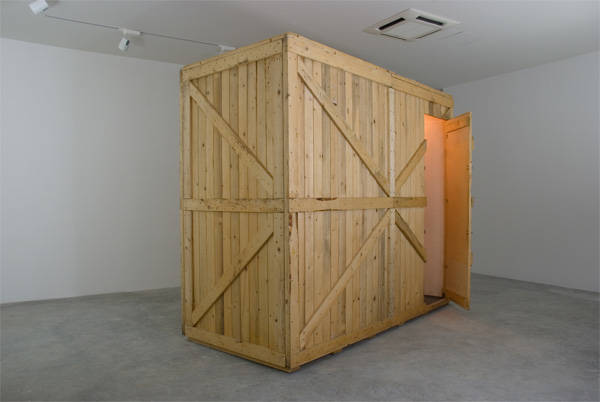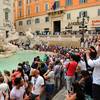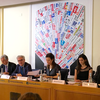Aldo Moro Anniversary: Between Memory and Art
ROME - The wooden box in the photograph, with a light inside and an open door, is an art installation--a political art work, explains the artist, 30-year-old Francesco Arena, born in Brindisi. Arena has reconstructed the prison cell on Via Montalcino where Aldo Moro was hidden in Rome for 55 days, or until his murder thirty years ago. The room is accurate down to the exact size and interior decor, with gray linoleum on the floor and a plywood divider creating two claustrophobic cells. Inside also are a chemical toilet and toilet paper, pen and a ream of paper, a bottle of mineral water, a fan, a tiny bed, a little table.
The disquieting installation is on view in a chic new Roman art gallery on Via Somalia owned by the Nomas Foundation, set up by an art collector couple, Stefano Sciarretta, 47, and his wife Raffaella Frascarelli, 43. In the installation, called "3.24 sq. m.", "the spectator is always an accomplice," writes critic Stefano Chiodi.
Arena's container evokes the myriad mysteries still surrounding this whole event, whose full workings are only now being understood. Moro was en route just 30 years ago today to Parliament for the swearing-in of his new government, which was tugging the old Communist party into respectability, meaning further away from Moscow control and at the same time tugging Italy's Catholic party, the Christian Democrats (DC), away from the early postwar era of Catholic Church and U.S. hegemony, including financial funding. Moro's new government would have confirmed for Italy that political shift already visible in the legalization of divorce and the adoption of a "workers' bill of rights" (Statuto dei lavoratori).
The political maneuver, sponsored by Moro and by the Communist party leader Enrico Berlinguer, was opposed by many conservatives in Italy. It also made both the Soviet Union and Italy's NATO partners, beginning with the U.S., exeedingly nervous. As an American diplomat told me at the time, "If we lose our naval base at Naples, we have nowhere to go in the Mediterranean but back to the US coast."
May 9 this year ijas been dedicated to the memories of all victims of terrorism. However, magistrate Guido Salvini wrote in an article published today, "The day should record both moments of reconciliation and a commitment to the truth, but where there have been half- or fuzzy truths, reconciliation is not possible." Giovanni Pellegrino, the former president of the Commissione Stragi, the Parliamentary commission investigating the various terrorism attacks, is now calling for an independent 'Truth Commission" to include not only of members of Parliament but also judges, historians and others in an attempt to make a full reconstruction of the difficult past--that past evoked in the reconstructed prison cell in the photo.






































i-Italy
Facebook
Google+
This work may not be reproduced, in whole or in part, without prior written permission.
Questo lavoro non può essere riprodotto, in tutto o in parte, senza permesso scritto.